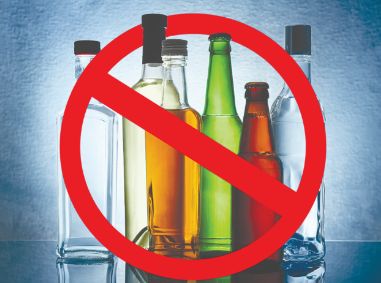Is prohibition a glass-half-empty or a glass-half-full scenario? A recent report by the Centre on Magnitude of Substance Use in India, commissioned by the ministry of social justice and empowerment (MOSJE), has reopened the debate about prohibition as an alcohol-control policy measure. The study has not only brought to our attention the high prevalence and burden of liquor consumption in the country, but has also underscored the need to review the alcohol-control policy environment in the country. Currently, alcohol is eighth in risk factor rankings for death and disability, and is responsible for five million deaths in India annually. Alcohol draws attention of public health professionals as it is a product that adversely impacts not only an individual’s well-being but also has passive impact, just like smoking. It negatively impacts a family’s income, society (accidents due to drink-driving, violence against women) and economy owing to lost productivity. The report presents results from a recent national survey, showing prevalence of current alcohol use as 14.6 per cent for the population between 10-75 years of age. Wide variability exists among states, with Chhattisgarh reporting the highest use and Lakshadweep the lowest. [caption id=“attachment_6238181” align=“alignleft” width=“381”]
 Excise alone cannot rein in liquor
Representative image[/caption] Prohibition is enshrined in the Constitution of India under Article 47 as Directive Principle, authorising states to ban intoxicating drinks which are injurious to health. The states of Bihar, Gujarat and Nagaland and one union territory, Lakshadweep, have completely prohibited sale and consumption of alcohol, whereas Manipur has banned alcohol in a few districts. States with prohibition clearly show low prevalence of alcohol use compared to the national figure with Lakshadweep at 0.2 per cent, Bihar 0.9 per cent, Gujarat 3.9 per cent and Nagaland 8.1 per cent. Earlier reports have also shown decreased incidence of violence against women in states with prohibition. It is, however, important to note that even though overall prevalence of current use of alcohol is lower in these states and so is ‘quantum of work (a variable that combines prevalence of harmful use and dependence)’, a substantial proportion of consumers is using alcohol in a dependent manner in Gujarat (30 per cent), Bihar (16 per cent, Manipur (17 per cent) and Nagaland (20 per cent), against the national figure of 18.5 per cent. Lessons from state-level prohibition in India do not present a clear picture of its impact. The move had a positive response in Andhra Pradesh with decrease in crimes, road accidents and violence as well as an increase in small-scale savings, but it also led to a rise in illicit brewing, incidences of hooch tragedies and corruption. This points to the need to embed prohibition alongside tightening of other legislation to avoid illicit trade of alcohol and to protect public health. The experience with prohibition in Haryana and Andhra Pradesh in the mid- 1990s suggests that the policy was ineffective as both the states eventually repealed their anti-alcohol laws. The consideration of excise tax values and declining land value (Haryana) likely played an important role in the repeal of prohibition. Though previously a persuasive case has been made against liquor ban based on the experience in the United States, a more scientific study is needed in India to study the impact of prohibition. The report also highlights an increase in prevalence of alcohol use among Indian men from 21 per cent in 2004 to 27.3 per cent in 2018.From a public health perspective, it is important to note the high prevalence of current use and, more importantly, the higher prevalence of alcohol-use disorders. With more than 30 million alcohol dependents and more than 40 per cent of alcohol users drinking liquor in a dependent manner in some states, India needs a comprehensive policy to address this risk factor and to fulfill its commitment to the nationally adopted target of 10 per cent relative reduction in alcohol use by 2025. Till now, alcohol has been regulated at the level of state government through excise departments, but the burden of this risk factor is felt by the health, social justice and finance departments. Prohibition is not the only answer: we need a comprehensive national policy to tackle alcohol in the country and this plan should be developed adopting a public health lens. Dr Monika Arora is Director — Health Promotion; and Additional Professor, Public Health Foundation of India
Prohibition is not the only answer. India needs a comprehensive national policy to tackle alcohol
Advertisement
End of Article


)

)
)
)
)
)
)
)
)



